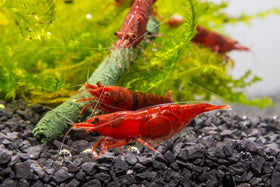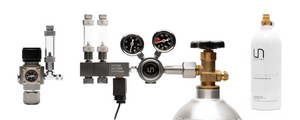
Anubias Minima UNS Tissue Culture
Common Name: Anubias Minima
Anubias are extremely easy plants to grow and can survive a wide range of water parameters. The Anubias Minima has long and slender leaves in contrast to the Anubias Nana which has short and rounded leaves. Like other Anubias plants, they can grow in both aquariums and terrariums either submerged or emersed.
Anubias grow best when attached to a hard surface such as stone, driftwood or other aquarium decoration. This plant comes attached to driftwood so all you have to do is place it into your aquarium.
They are flowering plants that have low to medium light requirements and can benefit from regular fertilization. Since its a slow grower, the leaves are susceptible to algae growth if placed under high lighting.
Propagation is easy and straightforward; simply cut or pull apart rhizomes to be replanted.
Notes:
- Anubias are strong plants that can thrive in a variety of environments.
- These epiphytes can be planted above the substrate or attached to hardscape.
- Burying the rhizome, will cause the plant to melt and die.
- Do not make drastic changes to the aquarium. Unstable parameters will result in melt and rotting of the aquarium plant.
- Tissue culture plants are grown in vitro from a state of the art laboratory specialized in propagating aquatic plants. They provide the best option for those who want to ensure that absolutely zero unwanted pests are introduced into the aquarium.
- Remove tissue culture gel before planting. Simply wash the gel away or soak the plant in water and squeeze the gel off with your fingers.
- For instructions on how to properly plant tissue culture aquarium plants, click here.
- CO2 injection will yield better growth.
- Please research appropriately to ensure your plant thrives.
Family Name: Araceae
Origin: West Africa
Height: 4-16"
pH: 6-7.5
Care: Easy
Light: Low
Co2: Not necessary
Propagation: Separate by rhizome
Growth rate: Slow to moderate






